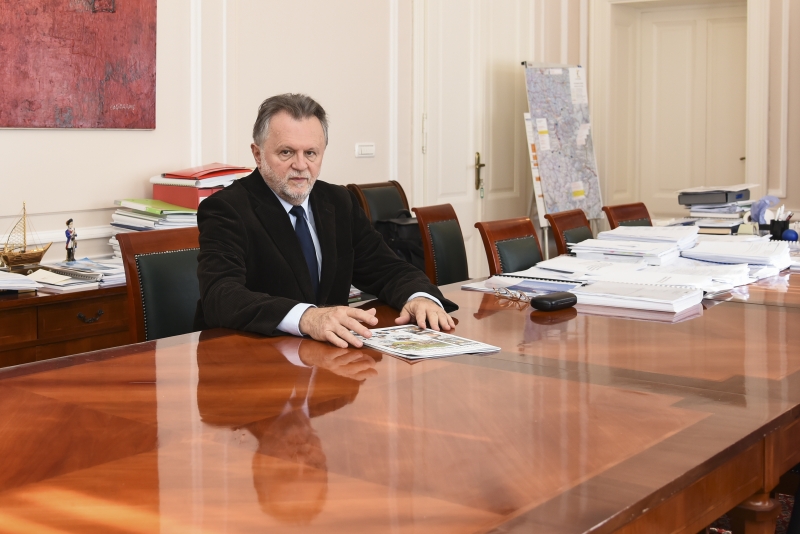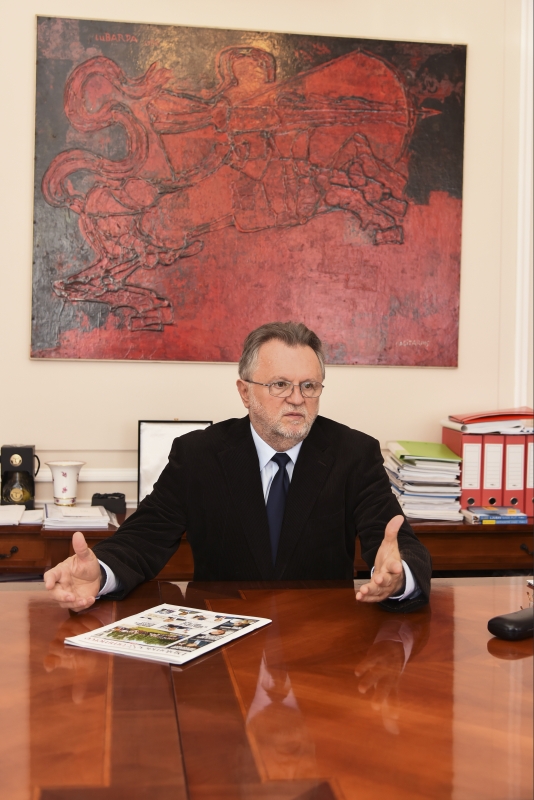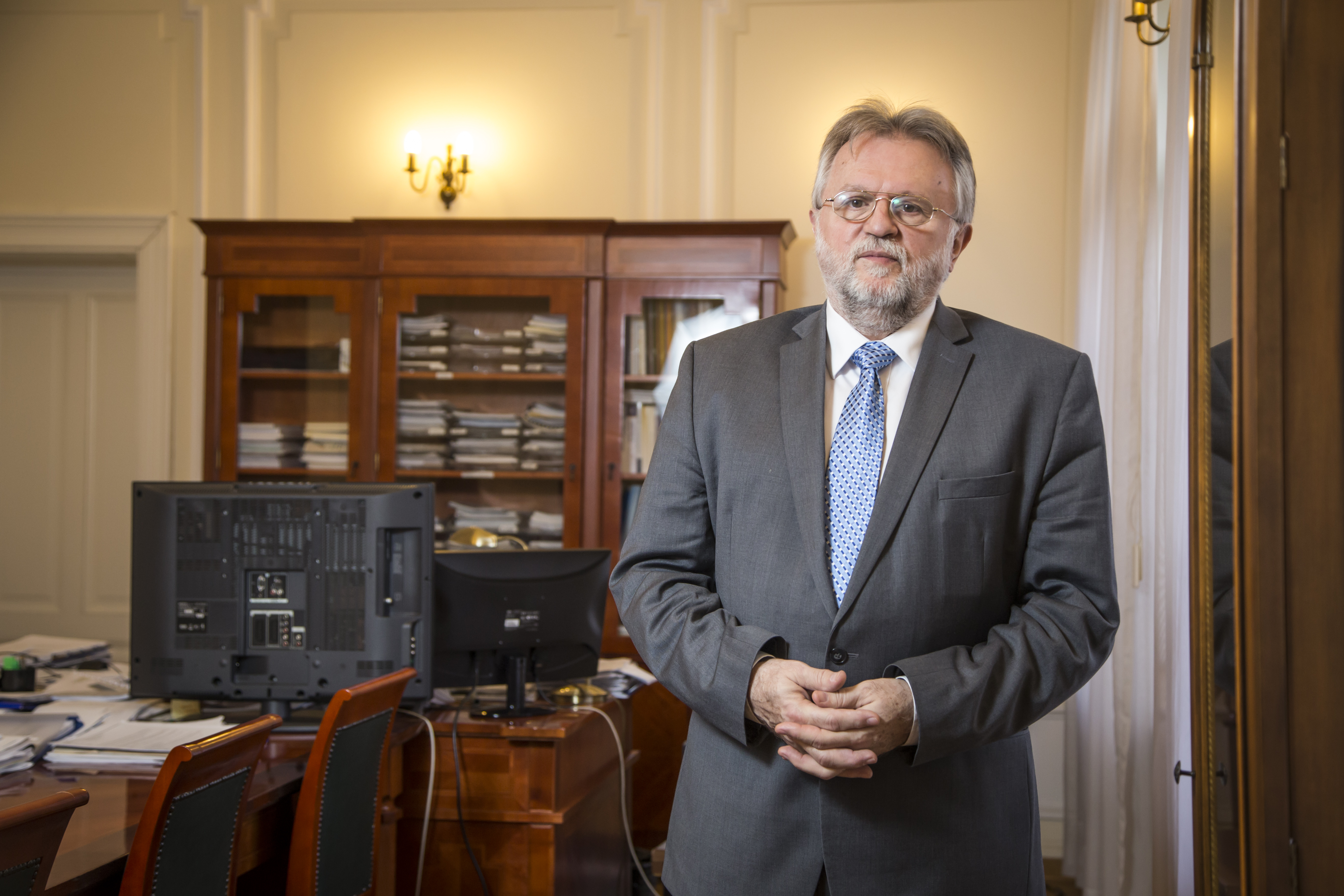The sustainability of good economic results should not be taken for granted. The utmost priority is continuing structural reforms to reach and consolidate investment grade level in international markets and attract large institutional investors. This is the only safe road to the EU, and a base for future prosperity and better living.

Serbia has never been closer to completing reforms and never had more at stake than today, says Dušan Vujović, the outgoing Serbian Minister of Finance, who believes that getting into clinch with unfinished structural reforms is a challenge that can be compared to the Odysseys. “We must resist the temptation of following the pressures of popular demands that may draw the reform ship to the Charybdis rocks and destroy it”, says Vujović. Our history of unsuccessful attempts to finish reforms says a lot about the cost which might have to be paid again.
Does Serbia needs IMF “policing” or advice?
— After three years of exemplary macroeconomic results, Serbia has demonstrated that it does not need policing in the area of fiscal and monetary performance. But it still needs a strong and credible external partner to sustain the reform effort beyond the successful completion of the fiscal consolidation program.
The likely themes of continued collaboration with the IMF include resolution of state owned banks, enterprises and public utility companies, continued tax administration reform, more efficient tax system, better assessment of fiscal risks, new public employment and wage laws, observance of rules against money laundering, reduction of informal economy, and further NPL resolution.
The preferred format of the program is the new Policy Coordination Instrument (PCI) which allows dialogue on the full reform agenda without access to financing which Serbia does not need due to strong external and fiscal balances.

Christine Lagarde, the Managing Director of the International Monetary Fund warned the Serbian delegation that nothing is more dangerous than success. What the history of our own failures teaches us about the premature spending such as those for higher wages and pensions?
— Indeed, Ms. Lagard said that after two years of our good fiscal results. She would probably use even stronger words of caution today. History teaches us that the economic team and political leadership, just like Odysseus, must resist the temptation of following the songs of beautiful Sirens (i.e. popular demands) that may draw the reform ship to the Charybdis rocks and destroy it. This already happened four times since early 1980’s. We must learn from our mistakes.
Serbia has never been closer to completing reforms and never had more at stake than today. Giving in to populist pressures may reverse the positive reform trend and cast doubt on hard won international recognition of tangible successes since 2014.
However, the GDP growth was pretty modest. Would you agree that Serbia is facing middle-income growth trap as some economists are suggesting?
— Discussion of economic growth has been overly politicized in recent years and based on weak and biased analysis. Slower growth performance in early years of fiscal consolidation is consistent with economic theory and empirical evidence. And so is growth revival in later years. Low level of economic activity since 2009 and an additional shock caused by the floods in 2014, made the starting point of the program exceptionally difficult. Nevertheless, economic recovery in 2015-2016 turned out to be stronger than initially expected. With the exception of slower growth in 2017, caused entirely by supply side factors, the upward trend continues as confirmed by the 4.5 percent GDP growth recorded in the first quarter of 2018.
In short, despite a lot of public and professional debate, the fact is that we now have macroeconomic stability and accelerating economic growth which is expected to stabilize at around 4 percent annually in the medium run, based on the existing level of investment, innovation, and productivity dynamics.
Yet, it isn’t enough, and the suboptimal level of public investments is obviously an obstacle to more robust growth. Wouldn’t you agree?
— To elevate this growth to a higher path, avoid the looming middle income trap, which haunts many countries, and successfully converge to EU income levels, Serbia must increase the level and efficiency of both public and private investment. But it also must complete structural reforms as fast as possible and secure the basis for sustained productivity growth through improved Competitiveness, enhanced Capabilities, and better Connectedness in the global economy. The three „C’s“ are at the heart of future manufacturing-led development as a recent World Bank study shows.
We have already secured significantly higher budget resources for public investment. Additional space can and will be provided in the coming years. The effective (binding) constraint has now moved from financing to quality preparation and implementation of public infrastructure and other development projects. Priorities must be carefully selected in line with strategic objectives, while project implementation must be accelerated to bring forward the results and, thus, crowd in private investment and increase the productive capacity of the economy. Only then will the country be able to reach higher sustainable growth path and catch up with the EU in income and quality of life.
In addition to project preparation/planning capacity (which needs qualified engineers and economists), and strong implementation capacity (construction sector and related machine building industries), the financial sector must be much stronger and profit driven. Financial deepening is needed both in the banking sector and in the capital market which must be revived and become the main source of investible resources for the private sector.
Will reform dynamics lose momentum if there is a gap between the previous and the new IMF arrangement?
— The IMF team is scheduled to complete their visit in mid-May. If the new program is concluded during the summer and its key parameters are reflected in the 2019 budget, which will be prepared in line with the schedule envisaged in the Budget System law (submission to Parliament by November 15), there will be no gap in the dynamics. Even if the program is approved few months later, the delay may not affect its effectiveness provided a true agreement on essential elements of the program are soon reached and adhered to. In addition to the main parameters of the next year budget, especially on the expenditure side, these elements include most of the often mentioned themes that are critically important for completing institutional and structural reforms.
And those are unfinished tasks such as the reform of the public administration, fiscal reform and the reform of the Tax Authority, reform of the public sector and the end of the process of privatization….
— These are precisely the main challenges. The “critical path” of reforms hinges on reaching political and social consensus to continue with these long overdue structural reforms. Technical side of these reforms is complicated and demanding, but can easily be done with the help of domestic and foreign experts once there is a resolve to go ahead with these essential economic, social, and political changes. Unfortunately, pressures to resist precisely these reforms and stop further institutional change are mounting every day now. The whole political discourse has returned to non-economic themes. The sustainability of good economic results achieved in the past 3-4 years has been taken for granted.
This may be a costly mistake. In the presence of structural gaps, strong demands for permanent longer-term expenditure commitments may take us away from the top priority: reaching and consolidating investment grade level indispensable for attracting large institutional investors. This is the only safe road to EU, and a base of future prosperity and better living.

It is hard to deny that in order to achieve that prosperity we need better selection of the top management in public sector. It seems that the cure hasn’t been found yet despite better legislation and assistance of the international financial institutions.
— One of the most demanding challenges in the next round of reforms is a comprehensive reform of the governance systems. In government. In public sector. And in the private (corporate) sector as well. Examples of bad appointments in public sector companies, involving loyal but incompetent people confirm that. But the problem is wider and deeper. Aside from appointments, there are also examples of dysfunctional governance structures in public, private, as well as mixed ownership companies. There is also a dire need for well trained, competent public and private sector managers, as well as qualified members of supervisory boards who can properly and effectively discharge their functions. This is particularly obvious and critical in public and mixed ownership companies where the residual risks fall on the state and all the citizens.
We have a long way to go in this area. Using TA to improve management capacity in critical places of the public enterprise sector is certainly one way of improving public sector governance situation. Unfortunately, simple solutions are not possible in this area. Even the most developed countries cannot prevent political influence in filling attractive positions in the boards of public and private companies. To lower the risks, good practice, in my view, would be to require prior screening of all potential candidates for their technical competence and impeccable past track record. Additionally, each appointment should be associated with clear performance criteria for individuals and boards as a part of the overall accountability framework.
Apart from the risks you mentioned there are other ones. One is the level of loans we may take from the Chinese sources? Is it dangerous to finance so many infrastructure projects from that source?
— Recent “One Belt – One Road” conference in Beijing organized by the Chinese Central Bank and the IMF focused on the fiscal risks of ambitious national, regional and global infrastructure projects launched under this initiative. Serbia has had privileged access to projects conceived under this initiative with combined commitment value of more than 20 percent of GDP. To manage those risks, the implementation strategy should aim to yield economic and broader development results as soon as possible. This can be done by completing meaningful segments of large projects and/or across connected projects, while at the same time spreading out the use of resources by lower priority projects to ameliorate the impact on indebtedness and debt-service. The same rule applies to other commitments of investment project financed from bilateral and multilateral sources.
It should be noted that, after four years of good fiscal performance, Serbia can now access long-term financing from international financial markets or top rated banks at AAA conditions with the help of MIGA guarantees. This broadens our financing options and makes some standard bilateral sources less attractive.
Swift reaction
It came as a shock that Serbia is at the FATF List of Countries that has been identified as having strategic AML deficiencies. What the government did to respond?
Serbia has made tremendous progress in the past few months to remedy objections on most of the 40 technical areas and show tangible progress in achieving intermediate outcomes in all eleven areas. With high level political ownership, good coordination across ministries and NBS, and sufficient technical competence in all relevant institutions, I have reason to believe that the February grey listing will soon be reconsidered and reversed in due course.
More importantly, we now have effective working mechanisms in place, from ministerial coordinating team to technical groups on all technical issues and result areas, to actively participate in the Moneyval activities and build capacity. Furthermore, an effort is underway to conduct a thorough screening of all the potential short-term and medium-term risks by conducting a National Risk Assessment with the professional help of the World Bank